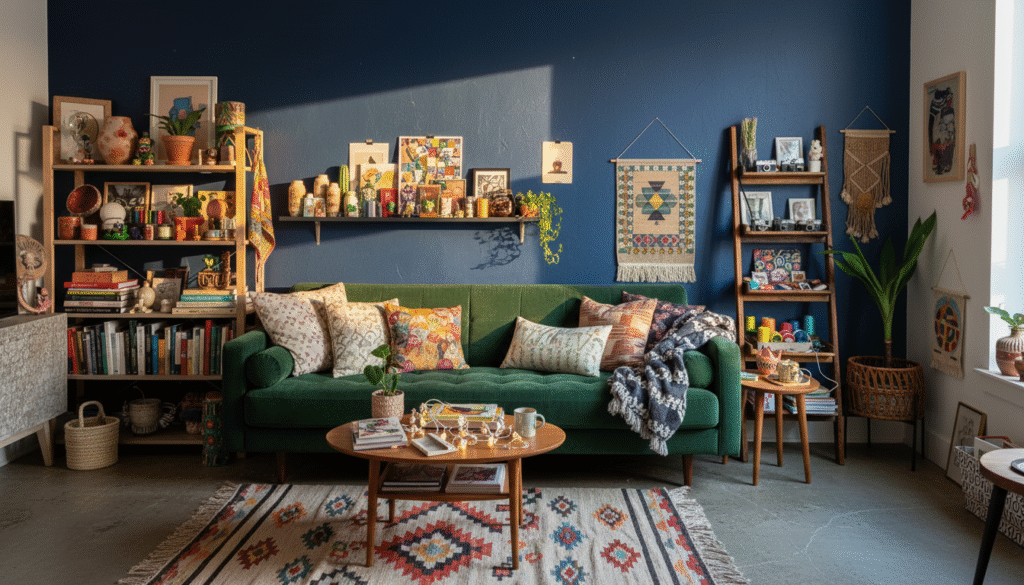
Small Apartment Decor Ideas: How to Make the Most of Every Square Meter
There’s something oddly comforting about a small space. It can feel intimate, personal, and full of potential — but if you’ve ever tried to fit a full life into fifty square meters, you know it can also be a challenge. Maybe you’re living in a city apartment where every corner has to serve a purpose, or maybe you’ve chosen a smaller home because you love the simplicity of it. Either way, decorating a compact space isn’t about limitation — it’s about creativity.
When space is tight, every piece has to earn its keep. Multi-purpose furniture quickly becomes your best friend. A coffee table with hidden storage, a sofa that folds out for guests, or a dining table that doubles as a work desk — these aren’t just clever solutions, they’re game-changers. The key is to think about function first. Ask yourself what you truly need day to day, and then find pieces that work double-time to support that lifestyle. Sometimes the most beautiful design choices are also the most practical.
Vertical space is another secret weapon. When you can’t spread out, go up. Floating shelves, tall bookcases, or wall-mounted storage instantly free up floor area and draw the eye upward, making the room feel taller. Don’t be afraid to take shelves all the way to the ceiling — it creates a sense of continuity, and it’s amazing how much extra storage it provides. Even hanging plants or pendant lighting can help lift the visual weight from the ground and give your space more breathing room.

Mirrors are a classic small-space trick, and for good reason. They reflect light, create depth, and make even the tiniest room feel open and airy. A large mirror placed opposite a window can almost double the perceived size of a room. If you can, choose mirrors with interesting frames or rounded shapes — they not only bounce light but also add softness and personality to the space. It’s amazing how one well-placed mirror can shift the entire mood of a room.
Color, too, has power. While white walls are a go-to for creating the illusion of openness, that doesn’t mean your space has to feel sterile or one-dimensional. Soft, muted tones — think warm beige, pale gray, sage green, or dusty blue — help light flow naturally while still giving a sense of warmth. If you crave contrast, add it through smaller touches like cushions, artwork, or throws. A light, cohesive color palette keeps things calm and consistent, which is especially helpful when rooms flow into one another.
Clutter is the quiet enemy of small spaces. It sneaks up slowly — a stack of books here, a few extra knick-knacks there — and before you know it, the calm starts to fade. The truth is, when you live small, minimalism isn’t just a style; it’s a way to keep your sanity. That doesn’t mean stripping away personality. It means curating. Choose decor that matters — items that bring joy, tell a story, or serve a purpose. A single ceramic vase with fresh greenery can say more than a crowded shelf of random trinkets ever could.
Lighting plays a surprisingly big role too. Instead of one harsh overhead light, try layering your lighting sources. Add a floor lamp beside the sofa, a table lamp on a sideboard, or wall sconces for reading. Soft, varied light makes the space feel cozy and dimensional rather than flat. Natural light is always the best, so keep window treatments light and airy. Let the sunlight spill in — it changes everything.
Decorating a small space is really about learning to edit. It asks you to think carefully about what you need, what you love, and how to make those things coexist harmoniously. There’s something freeing about that — knowing that every piece, every detail, has intention behind it.
If you’re struggling with your own small space right now, know that it’s okay for it to be a work in progress. It doesn’t have to look perfect or magazine-ready. Let it evolve with you. Add one thoughtful piece at a time, rearrange when inspiration hits, and give yourself grace in the process. A small home can still feel expansive if it reflects who you are. In fact, that’s where the magic really happens — in creating a space that feels full, not of things, but of life.
